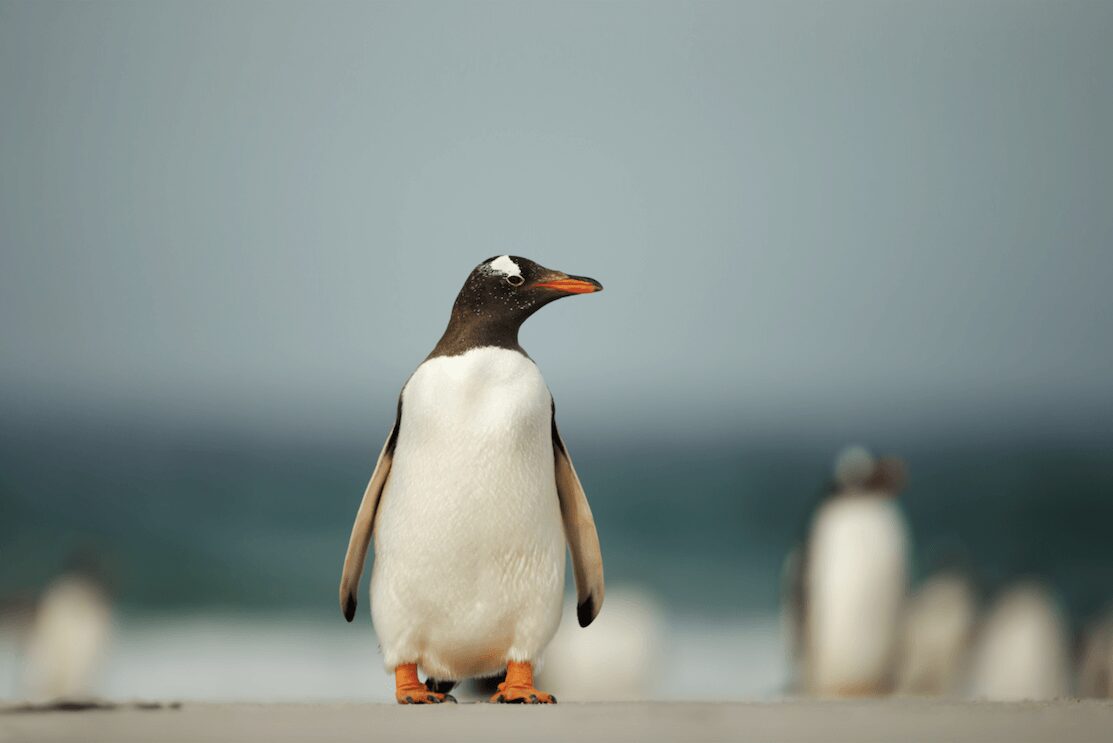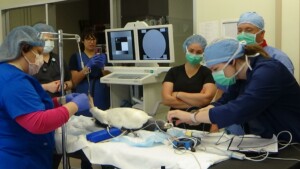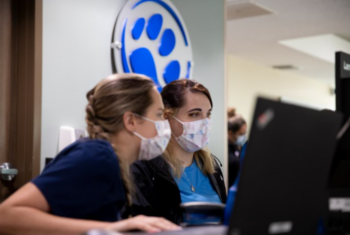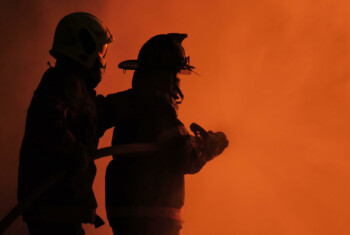Dr. James Giles and SeaWorld veterinarians perform surgery on penguin

San Antonio, Texas. Unlike most birds, penguins spend much of their lives in water. With diets consisting primarily of fish, these sea animals rely heavily on their streamlined bodies and webbed feet to move swiftly through the water and catch prey. These anatomical efficiencies are vital to a penguin’s survival.
So, when a three-month-old Gentoo penguin—a species of penguins known for their flamboyant red-orange beaks, white-feather caps, and peach-colored feet—fell and injured its foot, SeaWorld of San Antonio turned to BluePearl, Stone Oak, Texas, for expert veterinarian care.
Dr. Steve Osborn, senior veterinarian at SeaWorld, called in ACVS-SA Diplomate, Dr. James Giles of BluePearl, to examine the limping chick. After two rounds of X-rays performed at both SeaWorld and BluePearl, which revealed two fractured foot bones, doctors determined that the chick would need to undergo surgery.
A Penguin’s Path to Recovery

On April 5, Drs. Osborn, Giles, and Heather Siemon, surgical resident at BluePearl, performed the intricate surgery.
Penguins’ long breath hold and naturally low body temperature make them an extremely complicated avian species to operate on, according to Dr. Giles. “You really have to customize the procedure for an avian species like this,” he said.
“The fractures were accessed through small incisions and stabilizing pins were placed under fluoroscopy, which is essentially an X-ray ‘movie.’ The ray passes through the body part and is sent to a video monitor, allowing us to view the body part and its natural motion in real-time,” Dr. Giles explained. “Additionally, the pins were placed in a way that minimized the need to remove them after the fractures healed; eliminating a second surgery,” he added.
To regulate the penguin’s temperature and to avoid hyperthermia, the teams kept the chick on ice packs during the procedure and recovery. “Temperature regulation was particularly important in this case,” explained Dr. Giles. “In most instances, we work hard to keep the animal warm during anesthesia, but with penguins, we have to do the opposite. And since penguins are diving animals that can maintain a long breath hold, inducing gas anesthesia takes longer than it does for the average animal,” Dr. Giles elucidated.
SeaWorld veterinarians, who routinely deal with exotic marine animals, including dolphins, whales, and penguins, led the complex anesthesia. Kellie Dalrymple, anesthesia technician at BluePearl, who is working to obtain her Veterinary Technician Specialist certification, was able to participate in the advanced procedure.
A Successful Recovery
As a naturally active species, the doctors feared that the chick would reinjure itself post-surgery. However, within a few weeks the incisions healed. The doctors at Sea World reported the chick had a full recovery with no complications. “We can now use the success of this surgery as a teaching moment for other veterinarians and technicians,” said Dr. Giles. “Our team truly enjoyed the opportunity to help with this case, and hope to do so again in the future.”
“We are very grateful to Dr. Giles and the staff at BluePearl for their expert assistance with this case," remarked Dr. Steve Osborn. "This is our first case of multiple toe fractures in a young penguin and it is important for him to be able to walk around normally. The equipment and surgical skills available at BluePearl made this a highly successful surgery and the bird is doing very well now.”
View a clip from the surgery below.


